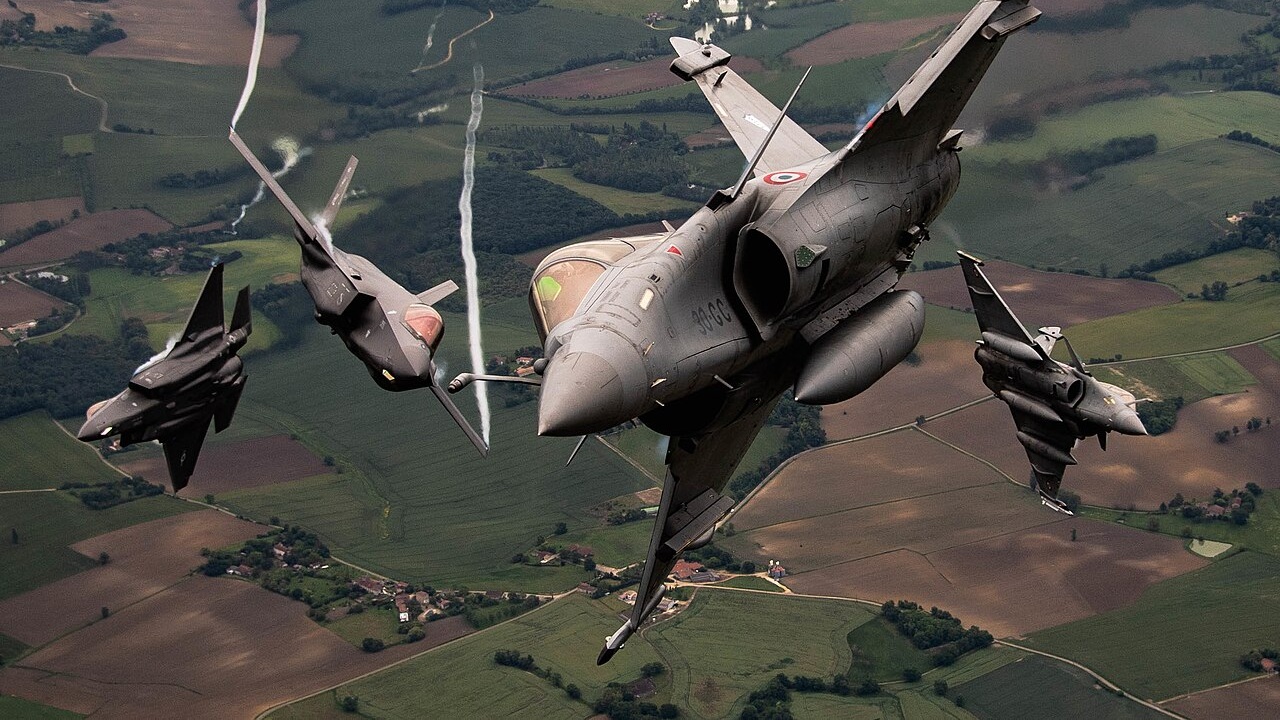
Aerial “Dogfighting” Is on Its Last Legs
Modern combat and technology have drastically reduced the frequency of dogfighting engagements, as beyond-visual-range (BVR) fighting becomes the primary combat mode.
Air combat maneuvering (ACM), more commonly referred to as “dogfighting,” is the dying art of two aircraft contesting the sky through maneuver, position, and timing. Successful ACM is fundamentally about geometry and energy management. A pilot’s success depends upon his or her ability to manage altitude, speed, and angle of attack—all while anticipating the opponent’s next move.
Dogfighting Is a Chess Match—with Fighter Planes
The way to “win” a dogfight is to get behind the opponent with one’s nose aligned on the target—the position in which an aircraft’s weapon systems may be deployed effectively. This position is known as the “pursuit curve,” and there are three different options for taking advantage of it: lead, pure, and lag. In a lead pursuit, the attacking aircraft points ahead of the defender’s path, cutting their corner to close range quickly. In pure pursuit, the aircraft’s nose points directly at the opponent’s current position. And in lag pursuit, the nose trails slightly behind the opponent, trading closure for control.
Another key ACM principle is the concept of the “turn circle.” Every aircraft in a maximum performance turn inscribes a circle in the sky. That circle is defined by speed, turn rate, and radius. The pilot capable of flying a smaller circle or maneuver within the opponent’s own circle gains positional advantage. This quickly becomes a sort of chess match, with each aircraft trying to tighten its circle or force the other to widen theirs, which requires a precise, ongoing adjustment of throttle and angle to avoid overshooting or becoming entrapped.
Pilots Engaged in Dogfighting Have to Preserve Energy
Rivaling geometry in ACM importance is energy management. An aircraft’s “energy state” refers to altitude (potential energy) and speed (kinetic energy). A pilot with high energy may choose to climb, dive, or accelerate, while a pilot with low energy is more constrained. An aircraft engaged in ACM wants to maintain an “energy advantage,” that is, enough speed and altitude in reserve to outmaneuver or disengage.
Energy, along with geometry, underscores the two archetypal ACM styles: energy fighting v. angles fighting. Energy fighters, in aircraft with strong thrust, try to stay fast by using vertical maneuvers to trade altitude for speed, then swooping down on their opponents. Historical and contemporary examples include the Messerschmitt Bf 109, the Northrop F-104 Starfighter, and the McDonnell Douglas F-15 Eagle.
Angels fighters, meanwhile, are positioned in more nimble jets, which thrive in turning contests where slight differences in turn rates can win position. Historical and contemporary examples include the Supermarine Spitfire, the North American F-86 Sabre, and the General Dynamics F-16 Fighting Falcon.
Have Better Aircraft Radars Killed the Dogfight?
Modern combat and technology have drastically reduced the frequency of dogfighting engagements, as beyond-visual-range (BVR) fighting—enabled by modern technology such as longer-distance aircraft radars—becomes the primary combat mode. However, modern pilots are still trained on ACM, just in case the situation arises. And in such circumstances, timeless truths about geometry and energy assert themselves, forcing pilots to manage energy, out-think geometry, and seize the offensive whenever possible.
Despite a century of innovation, from biplanes to today’s fifth-generation fighters, the basic principles of ACM have remained unchanged—forcing pilots in either a Sopwith Camel or a Lockheed Martin F-22 Raptor to anticipate moves, manage energy, and execute maneuvers with split-second timing.
About the Author: Harrison Kass
Harrison Kass is a senior defense and national security writer at The National Interest. Kass is an attorney and former political candidate who joined the US Air Force as a pilot trainee before being medically discharged. He focuses on military strategy, aerospace, and global security affairs. He holds a JD from the University of Oregon and a master’s in Global Journalism and International Relations from NYU.
Image: Wikimedia Commons.
The post Aerial “Dogfighting” Is on Its Last Legs appeared first on The National Interest.


















